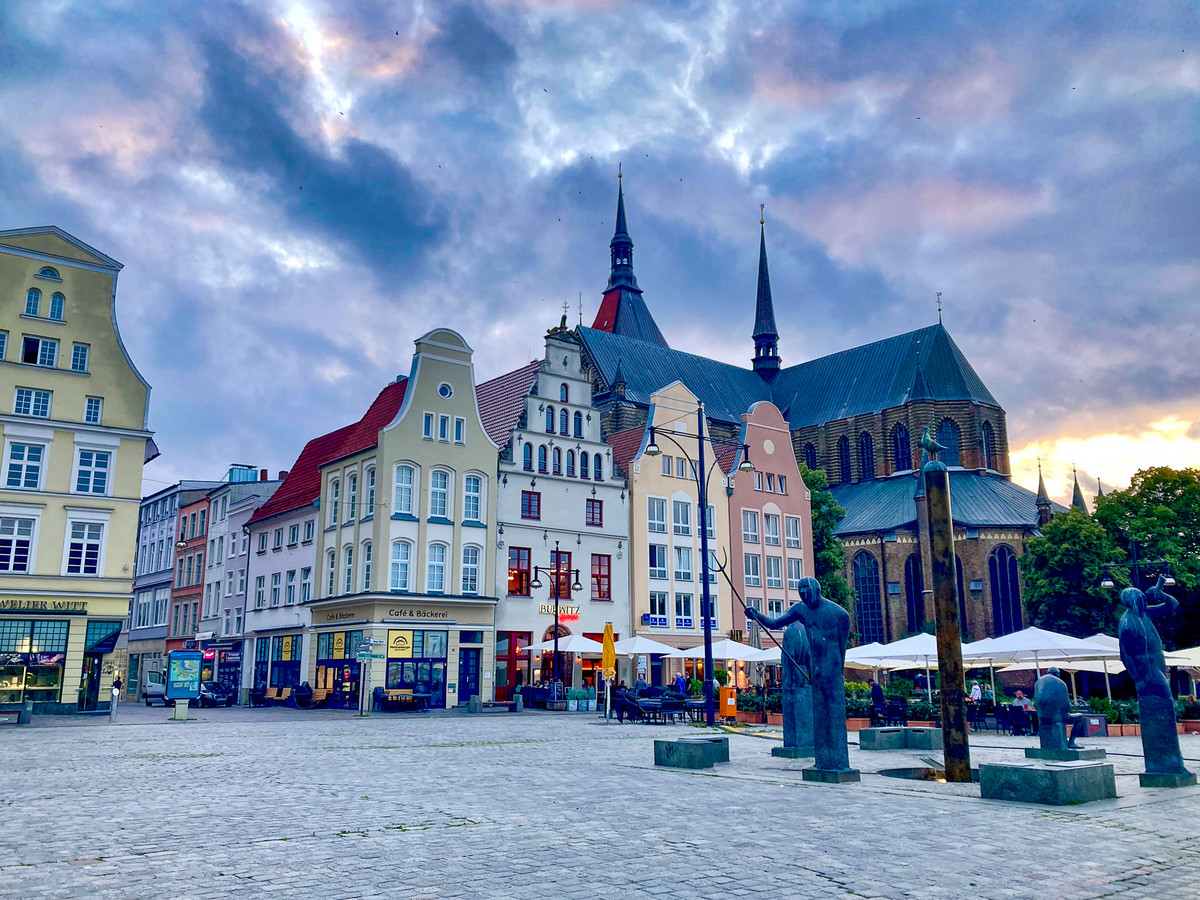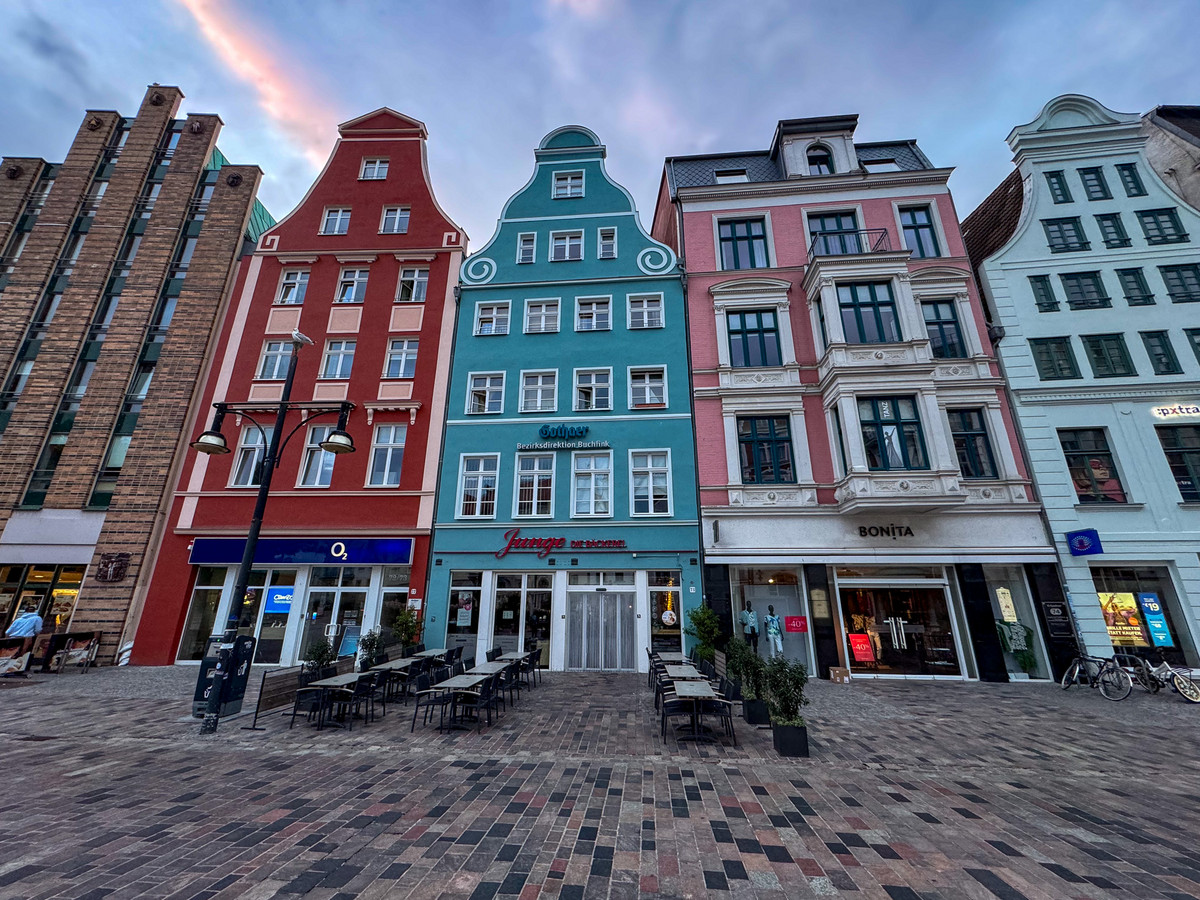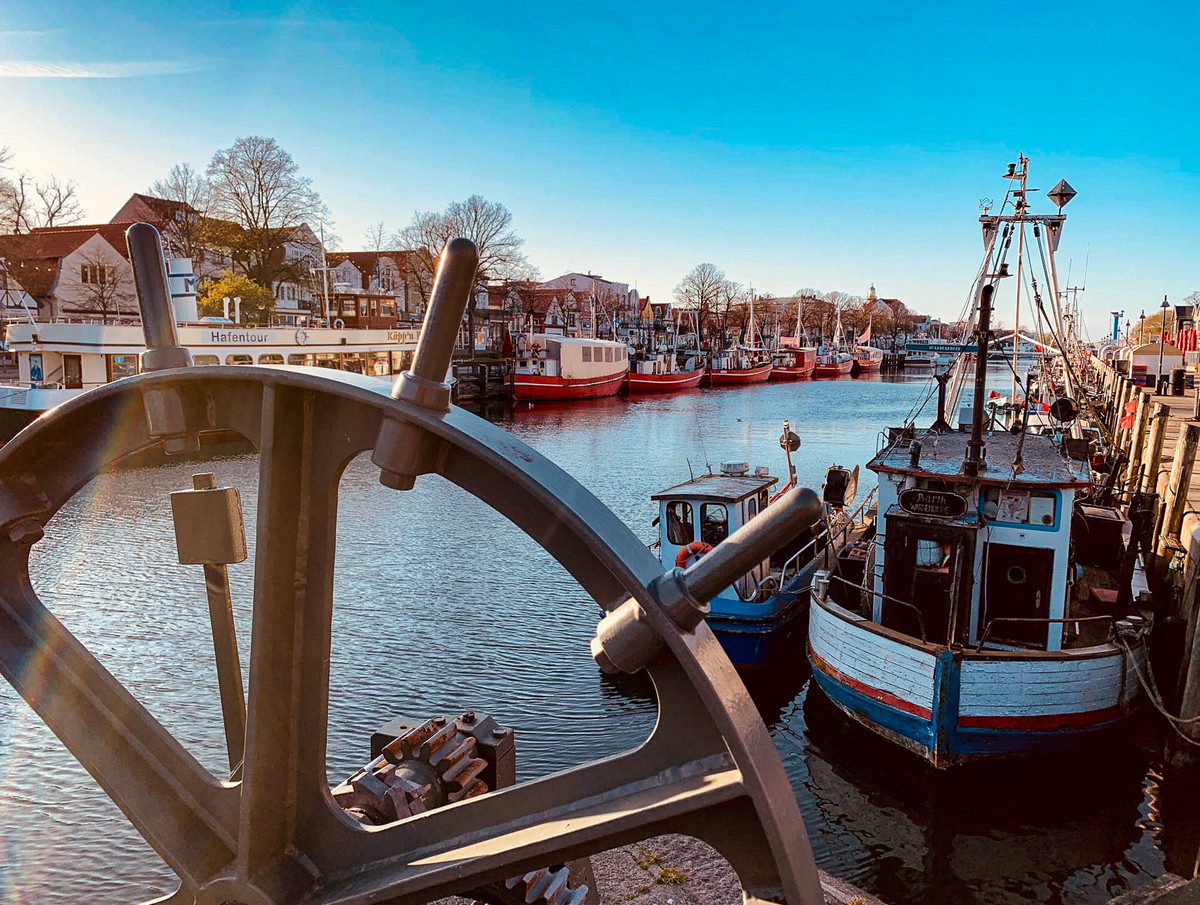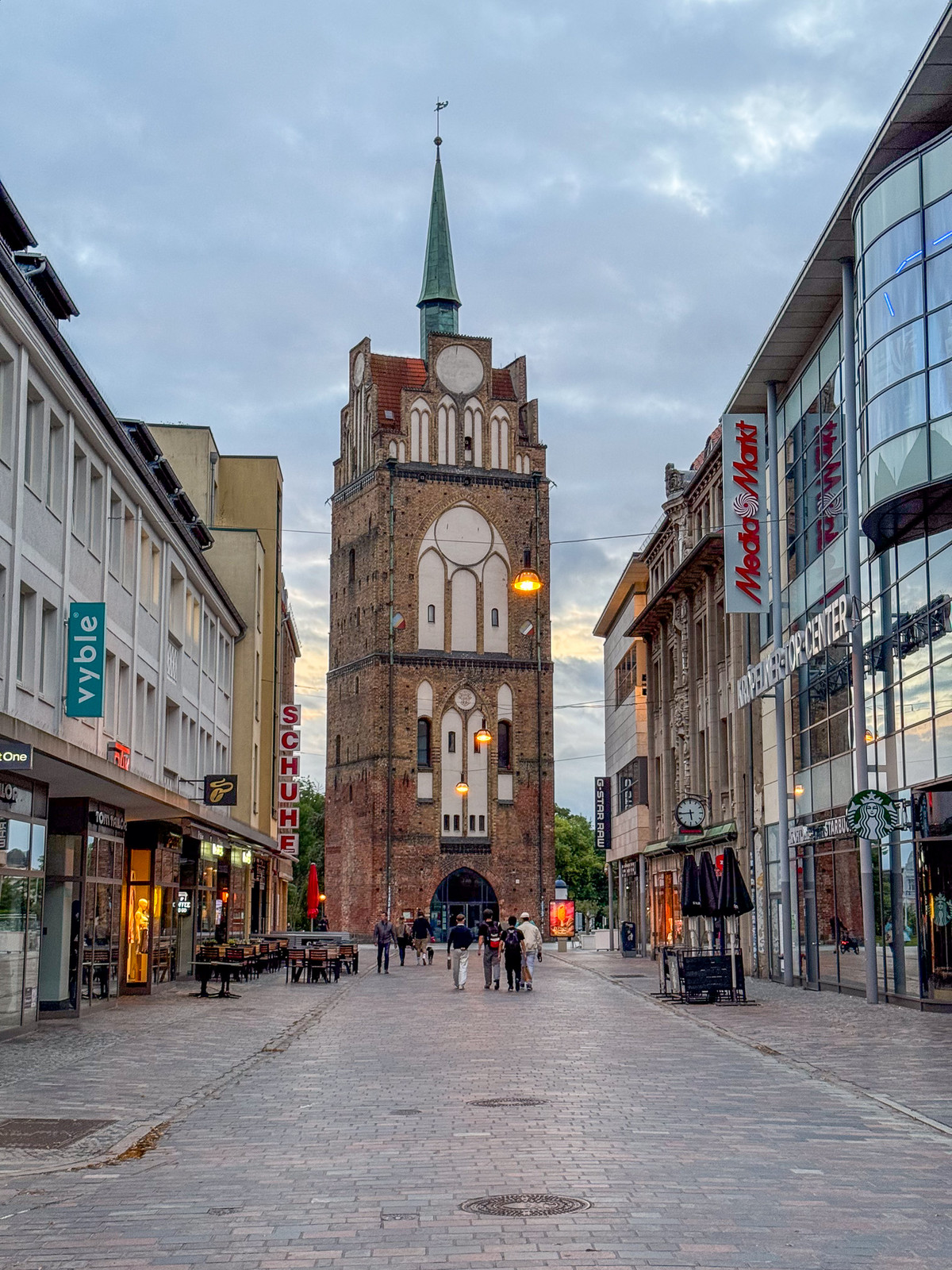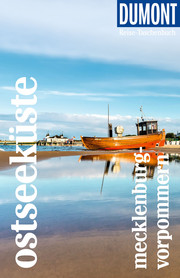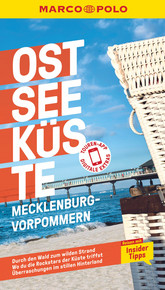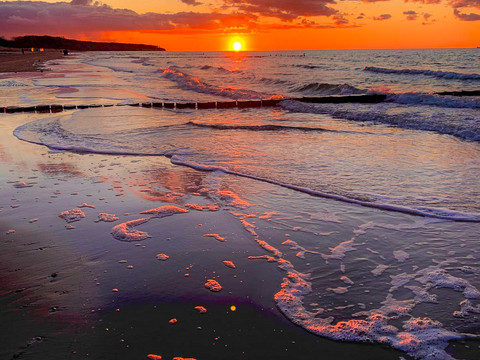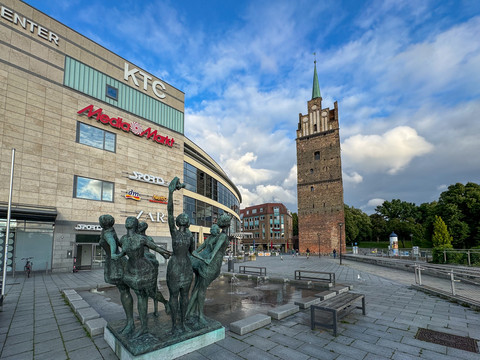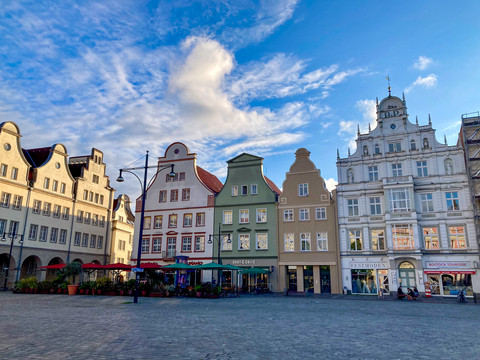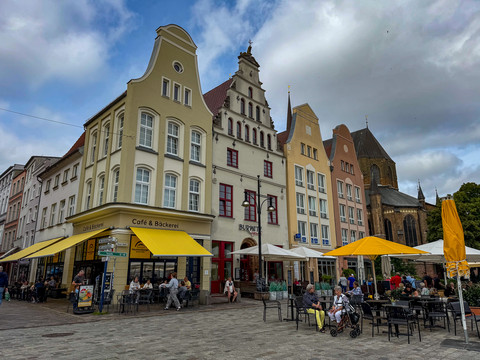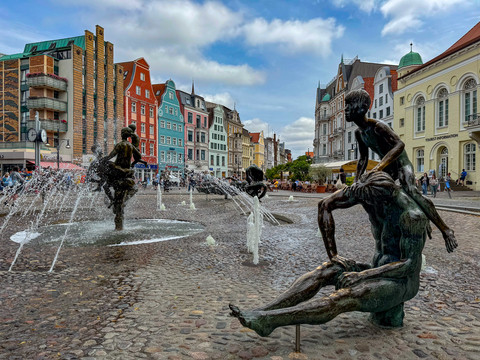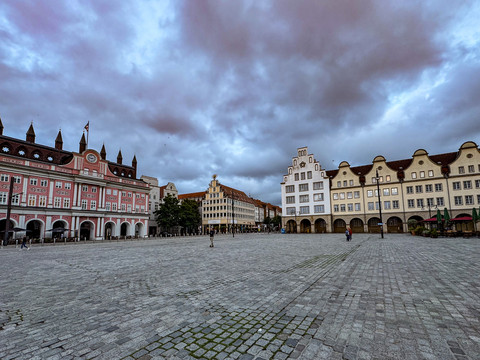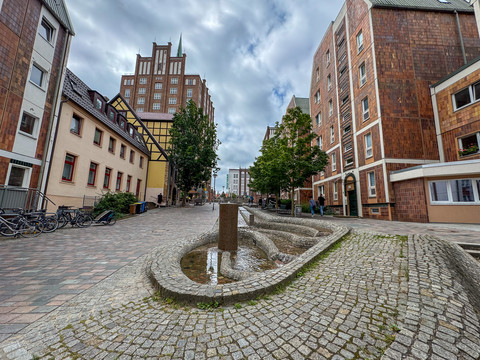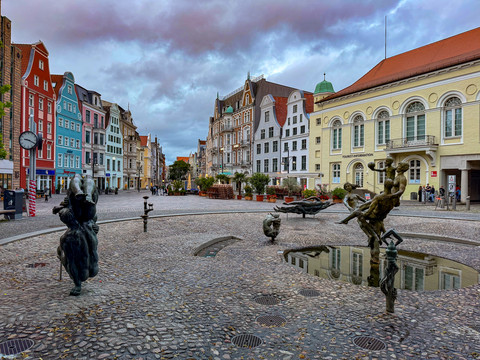Moin, moin! Rostock has quickly grown dear to my heart. The urban flair combined with Hanseatic architecture, a broad cultural scene, modern gastronomy, and diverse shopping options make the Hanseatic city of Rostock a true experience for culture and city enthusiasts. The oldest university in Northern Europe, photogenic city gates, and the omnipresent brick Gothic architecture hint at the Hanseatic charm of the past. Numerous museums and cultural offerings in extraordinary locations, such as a former shipyard hall or an old convent, provide a varied program. Outside the university town, a bike tour around the Warnow or a day at the beach in Warnemünde are great options.
With over 200,000 inhabitants, Rostock is the largest city in Mecklenburg-Vorpommern and, with about 14,000 students, a young city with many pubs and a lively cultural scene. Rostock is also home to the largest port on the German Baltic Sea coast, exuding a big city vibe while surprisingly being quite alternative.
In the 12th century, three towns developed in the region, which soon merged to form Rostock. During World War II, Rostock was an important center of the armaments industry and thus was the target of devastating bombing raids, which destroyed about half of the city along with much of its historical fabric. After the war, many houses were meticulously renovated, especially between the city harbor and Rosengarten, as well as between the Old Market and Kröpelin Gate.
The center of the old town is the pedestrian zone from Kröpelin Gate to the New Market and the town hall, which has housed the city administration for over 700 years. Architecturally noteworthy is the mix of styles; a baroque forebuilding was added to the Gothic façade with seven towers in the 18th century. Stroke the tail of the town hall snake Johannes; this is said to bring good luck. The New Market is especially popular in the summer as a bustling place to indulge and enjoy. The gable houses in typical Hanseatic style right across from the town hall are also particularly beautiful. Worth mentioning is St. Mary's Church. Inside, you can admire the astronomical clock from 1472, the vaults, the organ, and the tower with its bells on a guided tour.
From the New Market, head into the old town. The motto: explore and let yourself drift. Kröpeliner Street is the main shopping mile in Rostock and offers a diverse range of shops, restaurants, and cafés, ending at Kröpelin Gate. In the city center, on the university square, stands the unmistakable Fountain of Joy, which locals also call the "Porn Fountain." Here, especially in summer, there’s always something going on as children jump through the cool waters of the fountain while parents sit on the edge enjoying ice cream.
On your way to the city harbor, don’t miss the charming Baumhaus house from 1490. This late Gothic gabled house is one of the oldest merchant houses from the Hanseatic period. Its name comes from the fact that an oak mast supports the entire beam structure. The harbor on the Warnow River has developed into a popular cultural promenade. Stroll past yachts, tall ships, passenger vessels, restaurants, and cafés. The "Stubnitz," a former refrigerated ship of the East German deep-sea fishing fleet, is now used as a cultural ship. You can't miss the nearly 68-meter-long icebreaker "Stefan Jantzen," which was acquired by the Hanseatic city of Rostock in 2018 and is now used as a museum ship. For those looking for some physical activity, you can rent a SUP on warm summer days and paddle on the Warnow towards the sunset or join a guided tour on a catamaran.
Back at the New Market, the Ständehaus and the Stone Gate are must-see attractions. The historic Ständehaus was built between 1889 and 1893 and served as a parliamentary building before being used as a club house for the People's Navy in East Germany. Today, this impressive brick building houses the Higher Regional Court of Rostock. Both the exterior façade, adorned with numerous decorations and figures, and a look inside the grand hall are worth seeing. It is said that Rostock once had 22 gates (land gates, water gates, city gates) built along the city wall. Today, only 4 can still be found, including the remarkable Stone Gate. During World War II, large parts of Rostock's city wall were also destroyed. If you're looking for a good dining option, I recommend the restaurant L’Osteria, located near the Stone Gate. A place where all of Rostock gathers to enjoy the finest pizzas. Another highly recommended spot is the Burger & Beer-House Liberty Delis, where you'll find the tastiest burgers in the entire city. If you prefer Asian cuisine, you should visit Lunchbox Indochine, where you can enjoy delicious bowls, curries, salads, wraps, and pasta dishes.
When you leave the city center through the Kröpelin Gate, you will soon find yourself in the so-called "Kröpeliner-Tor-Vorstadt," or KTV for short. It’s a trendy neighborhood filled with small shops, alternative stores, pubs, cinemas, restaurants, and cafés. How about stopping by the hip café 92 Grad? In a cozy atmosphere, you can enjoy homemade cakes and excellent coffee roasts. While this area used to be home mainly to workers, today, the KTV is predominantly inhabited by students and young families. It’s best to grab a bike and explore the scene on two wheels. Afterwards, you can cycle directly to the adjacent Botanical Garden or the IGA Park, which was created for the International Garden Exhibition. This spacious park awaits you with several international gardens, the IGA Park stage, a historic shipyard, and the Weidendom with its café. The Chinese Garden is particularly well done. For animal lovers, the Rostock Zoo is a must-see, as it is one of the most beautiful zoos in Germany, home to over 4,500 animals across 450 different species. Noteworthy attractions include the Darwineum with its tropical hall, the monkey house, and the Polarium with its icy worlds. Also worth a visit is the Ghost Forest in Nienhagen. Here, you’ll witness a beautiful natural spectacle featuring a fairytale forest, steep cliffs, and breathtaking views. The drive from Rostock takes about 25 minutes by car.
Nothing against the old Hanseatic city of Rostock! However, if you have just half a day more, make sure to visit the seaside resort of Warnemünde, with its attractive Alten Strom, numerous fishing boats, the lighthouse, the promenade, and its wide, fine sandy beach.
The Alten Strom, which runs parallel to the entrance of the large ferries, serves as a harbor for sailors, fishermen, and excursion boats. On both sides of the waterway, you will find primarily snack stalls offering various seafood, as well as restaurants, cafés, souvenir shops, and boutiques in lovingly restored fishermen's houses inviting you to linger. Lighthouse enthusiasts will enjoy climbing the 1897-built lighthouse, clad in white-glazed bricks. From a height of 30 meters, not only can you gaze over the harbor entrance and the narrow streets of Warnemünde, but the beach and seaside promenade will also lie at your feet. For a wonderful panoramic view of the Baltic Sea, beach, and ships, the 19th floor of the Hotel Neptun is also an excellent choice. Homemade cakes and coffee await you at the highest café in Mecklenburg-Vorpommern, called Panorama. My tip for a sundowner: Warnemünde’s beach is famous for ferry wave surfing, and you can also directly book a wave surf course at the Supremesurf Beachhouse. Every month, a DJ is on-site to sweeten the warm summer days with house melodies. All your worries and thoughts will be blown away by the fresh Baltic Sea wind, and doing nothing feels just great!
To properly prepare for your trip
How you get there:
By train or with your own car
How to get around:
On foot or by bike, available for rent at Glücksrad-Warnemünde
How long am I supposed to go:
Weekend – with an option to extend in Warnemünde
Best travel time:
Summer season
Highlights:
Promenade Kröpeliner Straße, Neuer Markt with the Town Hall
More info:
www.rostock.de
Realised by Michael Bachmann
Further travel pictures under www.kissed-by-nature.com
